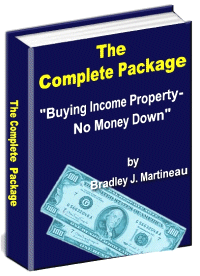A listing broker is the broker the seller hires to represent
him through the listing agreement. A selling broker is the broker who produces a
buyer for the property. He divides the commission with the listing broker at
settlement.
Discount brokers charge less than conventional brokers. The
discounter appraises the property, lists and advertises it, shows pictures of it
to prospects, and helps arrange financing. The homeowner does the showing.
Good brokers are vital to a quick sale. Their services
include the following:
1. Knowing how to sell a property.
2. Knowing how to identify a potential buyer in contrast to a
"looker."
3. Knowing how to price the seller's property in light of
current market trends.
4. Producing a qualified buyer, generally within the time
frame dictated by the seller.
The seller should provide the following information to the
listing broker, in addition to the property and income specifications:
1. Pay-off notice. Notification by the seller to the lender
of the seller's intention to pay off the mortgage. This notice should include
the lender's address, loan balance, years remaining on present mortgage, and
PITI.
2. Utilities. The seller should provide a record of the
past year of gas, electric, sewer, water, and trash-removal bills.
3. Items to be conveyed. The seller should provide the
listing broker with a specific list of personal property that is to be
included in the real-estate
property for sale. These may include draperies, drapery
rods, firewood, washer, dryer, refrigerator, stove, microwave, disposal, storm
doors and windows, screens, shutters, antennas, and shrubs. The seller should
tag or remove items not to be conveyed.
4. Miscellaneous. The property seller should also try to
provide the broker with a schedule of rents and expenses, copy of leases, a
termite inspection report, well and septic inspection report, records of
property taxes and special assessments and easements, surveys, appraisal,
subdivision plat map, floor plan, previous title search abstracts, legal
description of the property, warranties, and insurance policies.
The listing broker is spreading the word that the property is
available. The listing is generally promoted to two groups: the real-estate
community and the buying public. About 60 percent of all buyers come from
referrals between buyers and their network of contacts. About 20 percent of the
sales come from advertising. The remaining 20 percent are stimulated by
"For Sale" signs in yards. Thus, the most productive source of buyers
is through other brokers. The multiple listing service (MLS) computer can make
your property's description available to the entire MLS membership. Reciprocal
agreements with memberships in other territories expand the potential audience
even further. Signs in the yard, window, or on the building provide additional
exposure. They often create high-quality inquiries because prospects like the
location and have seen the property, rather than just a photograph. Some
communities don't permit signs on residential property.

